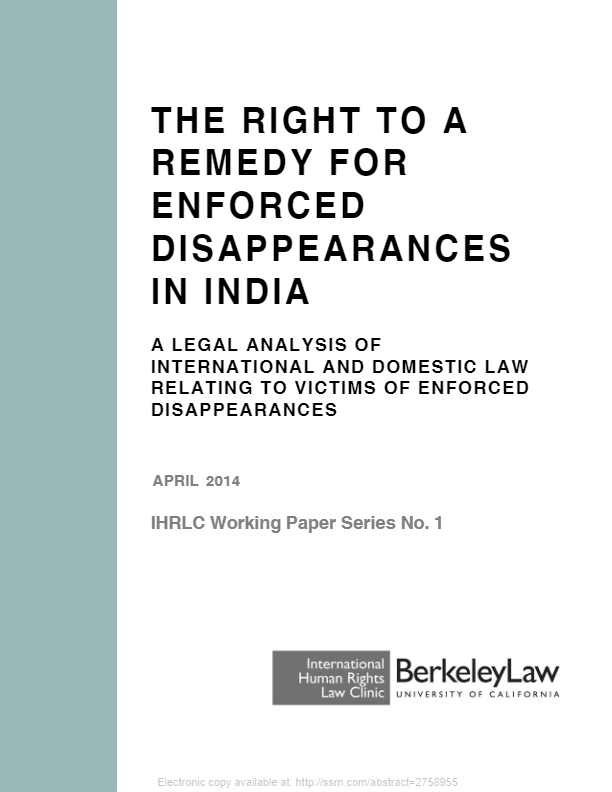
The Right to a Remedy for Enforced Disappearances in India: A Legal Analysis of International and Domestic Law Relating to Victims of Enforced Disappearances
The practice of enforced disappearance has reached a global scale, and India is not immune to this human rights violation. Individuals and communities in several Indian states have been targeted for enforced disappearance and suffered injury as a consequence. Simultaneously, international law continues to develop norms to prevent, prohibit, and redress enforced disappearances. As a sovereign state in a global context, India has assumed some, but not all, of these international legal obligations. In order to assist advocates in developing strategies to promote redress for the victims of enforced disappearance, including women placed in the precarious position of losing their family breadwinners, this paper analyzes the international law applicable to enforced disappearances, examines Indian law in light of these international standards, and points to areas where advocates can use international legal standards to argue for reforms to Indian law and policy.
This paper proceeds in eight parts. First, it places enforced disappearances in its historical context. Second, it discusses the development of the International Convention for the Protection of All Persons from Enforced Disappearance, a recent treaty that significantly shapes modern international law on enforced disappearances. Third, it examines the international human rights framework for enforced disappearances in India. Fourth, it discusses India’s obligations under international humanitarian law, specialized law that applies during times of armed conflict. Fifth, it reviews the relationship between international human rights law and international humanitarian law, and explores the applicability of these bodies of law to enforced disappearances. Sixth, it examines the international right to a remedy and the various forms that remedies may take. Seventh, it analyzes Indian domestic law against the backdrop of India’s international legal obligations. This analysis offers Indian activists guidance in considering the role that international norms may play in developing an advocacy strategy to promote redress for victims of enforced disappearances and torture. Part eight concludes.







